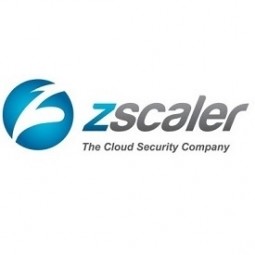技术
- 网络安全和隐私 - 应用安全
- 网络安全和隐私 - 云安全
适用行业
- 国家安全与国防
适用功能
- 设施管理
- 维护
用例
- 供应链可见性(SCV)
- 篡改检测
服务
- 云规划/设计/实施服务
关于客户
La-Z-Boy Inc. 成立于 1927 年,是世界领先的住宅家具生产商之一。该公司的基础设施包括 5 个制造工厂、5 个分销工厂、6 个区域办事处、墨西哥的 1 个大型供应中心以及遍布美国的 70 家商店。 La-Z-Boy 的各个地点共有 2,500 名互联网用户。该公司之前将基于中央代理的产品与 URL 过滤产品结合使用来确保网络安全,这导致了高带宽成本、增加的延迟以及由于网络内容错误分类导致的误报而造成的高管理负担。
挑战
La-Z-Boy Inc. 是一家领先的住宅家具生产商,其现有的网络安全解决方案面临着巨大的挑战。该公司的基础设施包括五个制造工厂、五个分销设施、六个地区办事处、一个位于墨西哥的大型供应中心以及遍布美国的 70 家商店,严重依赖于与 URL 过滤产品配合使用的基于中央代理的产品。由于所有流量都被回传到 La-Z-Boy 的总部,该解决方案导致高带宽成本和延迟增加。此外,由于 URL 过滤解决方案对 Web 内容的错误分类导致大量误报,该公司面临着沉重的管理负担。这不仅导致用户浏览体验不佳,还增加了 IT 部门的工作量。
解决方案
为了应对这些挑战,La-Z-Boy 评估了基于云的安全解决方案,作为升级现有解决方案或过渡到新的基于设备的解决方案的替代方案,这两种方案的成本都过高。基于云的网络安全解决方案不仅可以消除购买基于设备的解决方案的成本,还可以消除与维护相关的运营费用。维护责任将由服务提供商承担,从而降低 La-Z-Boy 的成本和复杂性。此外,基于云的解决方案将极大地提高对组织内资源使用情况或用户不当休闲浏览活动的可见性。 La-Z-Boy 选择了 Zscaler 云安全服务,该服务可以节省带宽成本、更好地利用 IT 资源以及更有效地分配 Web 资源。
运营影响
数量效益

Case Study missing?
Start adding your own!
Register with your work email and create a new case study profile for your business.
相关案例.

Case Study
Data Capture for Afghanistan Forces
Electronic equipments on the field of Afghanistan provided information on the status of the vehicle and to identify potential threats surrounding it to the British Force. The monitoring and interpretation of this data requires robust and sophisticated digitization for data capture and communication.
Case Study
Enhancing Security and Compliance in Remitly's Global Money Transfer Service with Fastly
Remitly, an online remittance service, was faced with the challenge of securing its proprietary global transfer network. The company needed a security solution that could meet PCI requirements and protect customers' sensitive transactions through its mobile application. The solution had to be capable of defending against new and emerging attack types without impacting performance. Remitly also had to deal with irregular traffic patterns, such as a sudden spike in account transfers from a small network segment on the Pacific coastline of South America. The company needed to determine in real time whether such traffic indicated an attack or valid requests. A traditional web application firewall (WAF) would not be able to distinguish this traffic, potentially leading to customer frustration if the IP was blacklisted.

Case Study
Major Aerospace Company Automates Asset Management
The O&M division of an aerospace and global security company was using spreadsheets to manually track more than 3,000 assets assigned to students and staff. Maintaining audit trails for this high volume of equipment became increasingly time-consuming and challenging. The chore involved knowing precisely what equipment was on hand, what had been issued, its location and the name of the custodial owner of each item. Every aspect of this task was carried owner of each item. Every aspect of this task was carried out by individuals with spreadsheets. Manually documenting the full lifecycle of each asset added to the burden. This included tracking maintenance requirements and records, incidents and damages, repairs, calibrations, depreciation, and end-of-life data.

Case Study
Securing a Large Data Center in the EMEA Region: An IoT Case Study
A leading data-center operator in the EMEA region, with multiple facilities spanning over 25,000 square meters, faced significant security challenges. The operator experienced interruptions in their internal IT network due to unsupervised work of third-party technicians. Despite having a high-end building control system that provided 24x7 monitoring and control to all the building’s infrastructure, the data center was vulnerable from a cyber perspective as it was connected to the IT network infrastructure. The operator launched an urgent OT cyber security project that included both IT-OT network segmentation and OT network asset mapping and anomaly detection. The main objectives were to harden the security of the server systems, secure the facility’s power supply and server cooling system, strengthen the segmentation between building and operational systems, create a visual OT network map, and set up a system for presenting supply-chain attacks that may threaten the data center through equipment vendors’ maintenance activities.

Case Study
Leveraging Graph Technology for Enhanced Cybersecurity: A Case Study on MITRE's CyGraph
MITRE, a federally-funded, not-for-profit company that manages seven national research and development laboratories in the United States, was grappling with the challenge of managing an influx of cybersecurity data. The constant changes in network environments were impacting the security posture of U.S. government agencies. Intrusion alerts, anti-virus warnings, and seemingly benign events like logins, service connections, and file share access were all potentially associated with adversary activity. The cybersecurity researchers at MITRE needed to go beyond rudimentary assessments of security posture and attack response. This required merging isolated data into higher-level knowledge of network-wide attack vulnerabilities and mission readiness. The challenge was not the lack of information, but the ability to assemble disparate pieces of information into an overall analytic picture for situational awareness, optimal courses of action, and maintaining mission readiness. The team also struggled with fully comprehending a given security environment and mapping all known vulnerabilities.

Case Study
Enhancing Security Precision with IoT: A Case Study of Guardsman Group
Guardsman Group, a leading security company in the Caribbean, faced a significant challenge in maintaining the security of its digital infrastructure. The company provides security equipment, personnel, and systems for various businesses across the region. However, one of its offices experienced a security incident that affected all communications at that location. The existing security tools were not sufficient to provide the necessary protection, and it took hours to identify the source of the issue. This incident highlighted the need for a dynamic solution that could proactively identify threats. The company's primary concern was any disruption to its business, as it manages a significant portion of Jamaica's money and cannot afford for its operations to go down.







